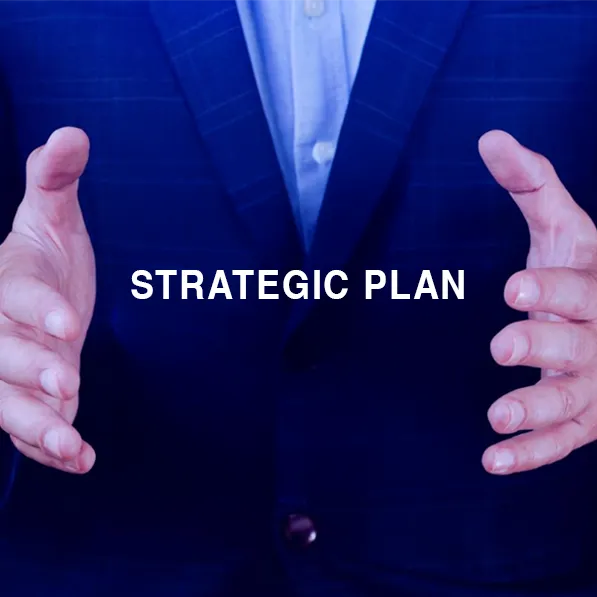
STRATEGIC PLAN
Your Business Needs a Map. Not Momentum. The Strategic Plan That Turns Effort Into Direction.
There is a moment in every business where hard work stops being enough.
You can be talented.
You can be driven.
You can work longer hours than anyone you know.
You can care deeply about your clients and your team.
You can sacrifice evenings, sleep, and weekends.
And still… the business does not move forward in the way you hoped.
Not because you are doing the wrong things —
but because you are doing the right things without direction.
This is where the Strategic Plan becomes the backbone of your business.
Because growth is not a result of motion.
Growth is a result of alignment + sequence.
And without strategy, a business becomes an exhausting treadmill — lots of movement, very little progress.
Let’s fix that.
What the Strategic Plan Really Is (and What It Is Not)
Most business owners think strategy means:
“Write goals.”
“Pick a number for revenue.”
“Make a list of things to do.”
But that is not strategy.
That is activity planning.
A Strategic Plan answers deeper, foundational questions:
What game are we actually playing?
What does winning look like?
What must we strengthen now before we grow later?
What will we not do — even if it’s tempting?
And most importantly:
What is the single biggest constraint preventing growth today?
Strategy is not about doing more.
It’s about deciding what to ignore so the right things move faster.
A business without strategy is like a ship without a compass — it may sail energetically, but it will arrive nowhere meaningful.
The Strategic Plan Has Three Non-Negotiable Components
1. A 3-Year Vision — Destination
This is the future you are deliberately building.
It is measurable, specific, and directional.
It defines:
The size of the business
The markets you serve
The reputation you hold
The revenue and profitability range
The owner’s role in the organization
This is your North Star.
Without a vision, decisions become emotional.
With a vision, decisions become logical.
2. A 12-Month Strategic Priority Map — The Route
This is not a to-do list.
This is a hierarchy of what must be built, in what order, for the business to mature.
It answers the question:
What are the 3–5 strategic priorities that will change the capacity of the business this year?
Examples:
Build the sales pipeline system
Standardize the delivery process
Hire & develop a key operational leader
Improve pricing and product structure
Implement KPI dashboard and rhythm
These are infrastructure changes, not daily tasks.
3. A 90-Day Execution Plan — The Steps
Long-term plans are useless if they don’t change what happens next Monday morning.
The 90-Day Plan converts strategy into action.
It defines:
What gets done
Who owns each commitment
How progress will be reviewed and measured
This is where goals become reality.
If the 3-Year Vision is inspiration
And the 12-Month Strategy is direction
Then the 90-Day Plan is behavior.
And behavior is what changes businesses.
Why Most Strategic Plans Fail
Not because the business owner doesn’t care.
Not because they lack intelligence.
Not because they aren’t committed.
Strategic plans fail because:
They try to fix everything at once.
They are built without identifying the single constraint that limits growth.
They are written once, then forgotten.
They are not reviewed with discipline.
The team does not know how to operationalize them.
A plan that sits in a folder is not a plan.
A plan that changes decisions and actions is a plan.
The difference is rhythm.
Which brings us to the truth most business owners need to hear:
Your business does not need more effort.
It needs more alignment.
Finding the Constraint — The Heart of Strategy
Every business has one limiting factor that controls growth.
Sales might be strong but delivery is inconsistent.
Delivery might be excellent but lead flow is unreliable.
Lead flow might be solid but pricing is too low to scale.
Team may be capable but leadership capacity is weak.
Leadership may be strong but there are no systems.
If you try to improve everything, you weaken the system.
If you strengthen the right thing, the entire business shifts forward.
Strategy is the courage to focus.
Your Strategic Planning Ritual
Every 90 days:
Reconfirm the 3-Year Vision
Re-evaluate the business constraint
Set 3–5 strategic priorities for the next quarter
Assign clear ownership
Review progress weekly
Make course-corrections without emotional drama
Stay consistent, even when impatient
This rhythm is where businesses transform.
Not with genius.
Not with speed.
Not with intensity.
But with clarity + consistency + discipline.
This is the path to real scale.
Let’s Ground This in Coaching Reality
If you are in:
Step 1: Creation — your Strategic Plan focuses on clarity of offer & market.
Step 2: Chaos — your Strategic Plan focuses on stabilizing systems.
Step 3: Control — your Strategic Plan focuses on structure and margin.
Step 4: Prosperity — your Strategic Plan focuses on simplification and efficiency.
Step 5: Freedom — your Strategic Plan focuses on leadership succession and legacy.
The Strategic Plan evolves with you.
It grows as you grow.
You are not just building a business.
You are building a company that knows where it’s going.
And businesses that know where they are going are the businesses that win.
Your Coaching Call Prompt
Ask yourself — without justification, without explanation:
“What must change in this business next — before anything else?”
Your answer is your strategic priority.
And we build from there.
